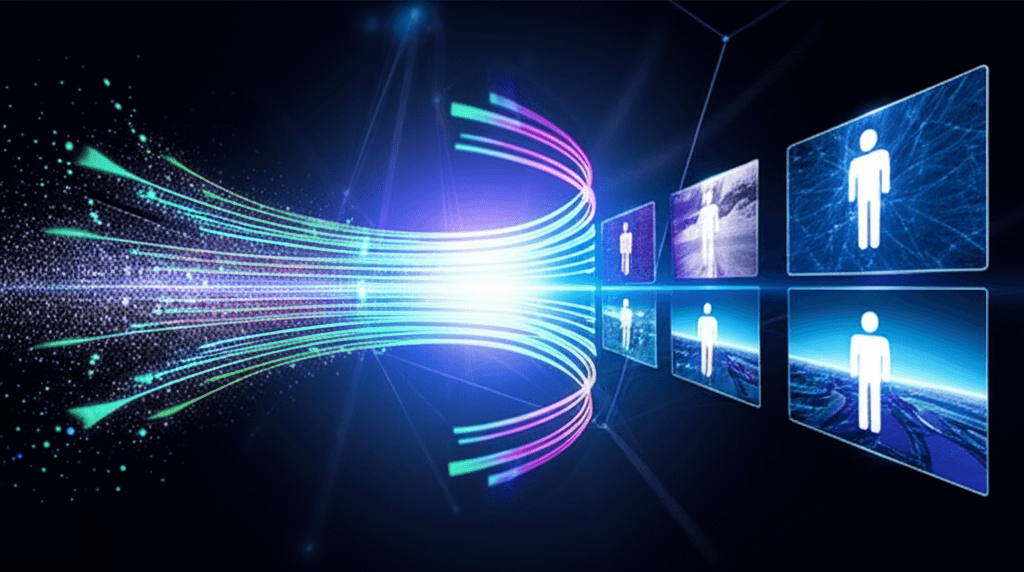Google Unveils "Nano-Banana" As Gemini 2.5 Flash Image, Revolutionizing AI Art
Google's acclaimed "Nano-Banana" model is now Gemini 2.5 Flash Image, delivering unparalleled AI editing and consistent character generation.
August 26, 2025

In a significant move within the rapidly evolving landscape of generative artificial intelligence, Google has officially unveiled its latest image generation and editing model, dubbed Gemini 2.5 Flash Image.[1][2] The model, which had previously garnered considerable attention and speculation under the mysterious codename "Nano-Banana," is now accessible to developers and enterprise clients through the Gemini API, Google AI Studio, and Vertex AI.[1][2] This new tool introduces a suite of advanced features designed to offer users more powerful creative control and higher-quality image outputs, positioning itself as a formidable contender in the competitive AI image generation market.[2] The announcement confirms the identity of a model that had been anonymously outperforming established rivals in blind tests on community platforms, creating a buzz long before its official branding was revealed.[3][4][5]
At the core of Gemini 2.5 Flash Image's capabilities are its sophisticated editing and fusion features, which aim to provide a more intuitive and seamless creative workflow.[2] Users can perform targeted transformations on images using natural language prompts, allowing for precise modifications like changing a background, altering a subject's expression to a smile, or adding specific elements to a scene without the need for traditional, layer-based editing software.[3][6] A key innovation is the model's ability to blend multiple images into a single, photorealistic composition.[2] Furthermore, Google has addressed a fundamental challenge in generative AI: maintaining character and object consistency across multiple images.[3][2] This "identity preservation" allows users to place the same character in different settings or generate consistent brand assets, a feature crucial for storytelling and commercial applications.[6][2] The model also leverages Gemini's vast world knowledge to inform its image generation and editing processes, enhancing the realism and contextuality of its outputs.[2]
The story of "Nano-Banana" is unique in that it first emerged organically from the AI community.[3] The model began appearing on LMArena, a platform where different AI models compete anonymously in user-judged "battles."[6][5] Users consistently noted the superior performance of one particular anonymous model, which excelled at understanding complex prompts, maintaining character consistency, and executing detailed edits with remarkable accuracy.[6][5] This led to widespread speculation on platforms like Reddit and Discord, with many industry observers correctly guessing the project's origins lay with Google, given the quality and the company's history of using internal codenames.[3] This stealthy, community-driven evaluation period effectively served as a public beta test, generating significant hype and providing real-world validation of the model's capabilities before its official launch.[3][6]
The introduction of Gemini 2.5 Flash Image carries significant implications for the AI and creative industries. Its advanced, language-driven editing capabilities could challenge the dominance of established image editing software like Adobe Photoshop by offering a faster, more accessible workflow that does not require specialized technical skills.[6][7] For AI artists and creators, the model's speed—often delivering results in seconds—and its strength in maintaining character consistency open up new possibilities for creating coherent narratives, comics, and brand campaigns.[6] The performance of "Nano-Banana" has been noted to surpass existing models like DALL-E 3 in areas such as text accuracy and prompt adherence.[4] This leap in capability signals an acceleration in the development of generative media, pushing the boundaries of what can be achieved in photorealistic rendering and intelligent image manipulation.[6][4]
Google has made Gemini 2.5 Flash Image accessible on several of its platforms, catering to both individual developers and large enterprises.[2] In a move to foster adoption, significant updates have been made to Google AI Studio's "build mode," allowing users to quickly test the model's features and even build custom AI-powered applications with a single prompt.[2] The pricing for the model has been set at $30 per 1 million output tokens.[1] Each image generation costs 1,290 tokens, which translates to a cost of approximately $0.039 per image, a competitive rate designed to attract a broad user base.[1][2] To further expand its reach, Google has also partnered with platforms like OpenRouter.ai and fal.ai to make the model available to their extensive developer communities.[2] All images generated by the model include an invisible SynthID watermark to distinguish them as AI-created content, reflecting Google's ongoing commitment to responsible AI practices.[8][9][10]